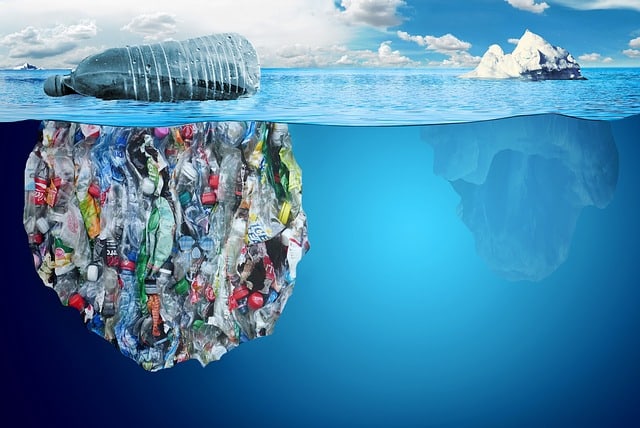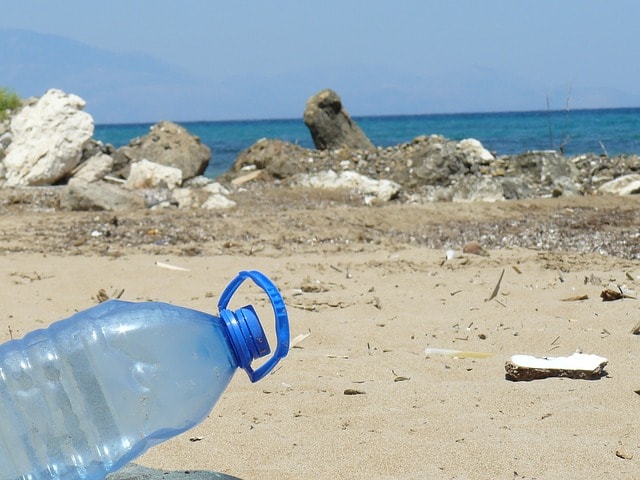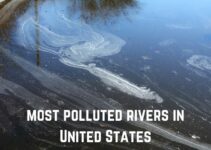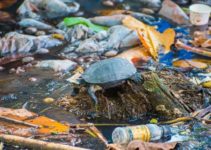Just as we cannot escape plastic in our lives, so is plastic pollution. Almost everything that we come into contact with is plastic from teacups, computer mouse, mobile phones and plastic-framed computer monitors, among others. And this does not end there as we come into contact with plastic almost everywhere.
Plastic is like an epidemic, and each person can relate to it. However, the big question is, “where does all this plastic go?” While some are recycled, some thrown into landfills and some are thrown loosely into the streets or our immediate environment; the loosely disposed plastic usually ends up into our waterways. Most of this plastic is found floating in the ocean waters, most especially in the Indian Ocean, where a lot of plastic is disposed of in its waters.
Tiny plastic beads have equally been found in several toiletries, such as toothpaste and scrubs. Plastic does not just adversely impact the earth. Instead, it also affects people’s health. What’s more, plastic does not degrade; instead, it breaks down. Below are 50 intriguing facts about plastic pollution.
Fact 1. There is high plastic pollution in the world. Over the last decade, human beings have produced a lot of plastic as compared to the whole period of the last century.
Fact 2. Every day tons of plastic are swept into the Pacific Ocean. Several plastic materials are swept into the Pacific Ocean. For example, in the Los Angeles area in the US, around 10 metric tons of plastic fragments such as soda bottles, straws, and grocery bags are thrown into the Pacific Ocean.
Fact 3. Around 50% of the plastic that people use are used only once. They are then thrown away as waste.
Fact 4. The amount of plastic that is thrown away annually can circle the earth four times. The plastic thrown away is so much so that there is a need to ban it.
Fact 5. Currently, we can only recover around 5% of the plastic bags that we produce. Most of the plastic bags once used are thrown away as waste instead of being collected and recycled for later use.
One ton of recycled plastic saves 5,774 kWh of electricity, 685 gallons of oil, 98 million Btu’s of energy, 30 cubic yards of landfill space. Very few plastic bags are recycled, which is not healthy for our environment and human health in the long run.
Fact 6. An American throws away around 185 pounds of plastic each year. An average American throws away so much plastic bags that it weighs hundreds of pounds.
Fact 7. Humans generate a lot of waste, and plastic accounts for approximately 10% of the total waste. Human beings generate waste, such as kitchen waste, among other wastes. All these waste, if not most of it is thrown into landfills, on our surrounding areas, or in the water bodies. While some of it may slowly degrade, plastic will never degrade.
Fact 8. The Americans throw away around 35 billion plastic water bottles annually. Bottled water is ready-made, portable and easily accessible; hence most Americans opt for it. However, these bottles are not reused by people; they look for new ones once they are done.
Subsequently, the number of bottles that are thrown away by Americans is worrying. Using reusable drink containers, an average person can eliminate the need for 100 disposable bottles every year.
Fact 9. The body can absorb plastic chemicals. Approximately 93% of Americans who are age 6 and above and 95% of Canadians have tested positive for BPA, which has been found in the urine.
Fact 10. There are some compounds found in plastic that can alter hormones or even have some potential human health effects. PBC is one such chemical that significantly alters an individual’s hormones, thus resulting in some adverse health effects.
Fact 11. About 97% of plastics ever made still exist. Apart from the small amount of plastic that is incinerated, every other piece of plastic ever made continues to exist in some form or shape.
Fact 12. There are numerous microscopic particles of plastic that we consume unknowingly. Some samples were collected from Lake Erie, and 85% of those plastic particles were found to be smaller than two-tenths of an inch, and a lot of this was microscopic. The researchers found 1,500 and 1.7 million of the above particles per square mile.
Fact 13. There are so many ocean animals that are killed every year from plastic. Around one million sea birds and 100,000 marine mammals are killed each year due to plastic ingestion.
Fact 14. There is so much plastic trash that is left floating on the ocean’s surface. Plastic accounts for around 90% of all ocean trash with 46,000 pieces of plastic for each square mile.
Fact 15. Plastic does not degrade easily. It takes around 500-1,000 years for plastic to degrade. Plastic only breaks into very small, tiny pieces but does not degrade, thus polluting the environment.
Fact 16. Over a million bags of plastics are used annually across the globe. In a year, around 500 billion plastic bags are used globally.
Fact 17. Currently, Americans generate 10.5 million tons of plastic waste annually. However, they recycle only 1% to 2% of this amount.
Fact 18. Globally, the fishing industry dumps around 150,000 tons of plastic into the ocean annually. This does not include plastic nets, buoys, lines, and packaging, among others.
Fact 19. A lot of energy is saved, around twice, through recycling of waste as compared to burning the plastic in an incinerator.
Fact 20. US law, which implements an international agreement known as MARPOL Annex V, took effect on 31st December 1988. This law prohibits disposing of plastic into the marine environment and requires that ports provide reception facilities for ship-generated plastic waste.
Fact 21. In the swirling convergences within the oceans, there are billions of pounds of plastic, and they make up around 40% of the world’s ocean surfaces. Around 80% of plastic pollution enters the ocean from the land.
Fact 22. Plastic in the oceans is believed to break down into very small pieces. Each of these pieces of plastic from a one-liter bottle could spread to each and every mile of beach all through the world.
Fact 23. 22% of cetaceans, 44% of all seabird species, all sea turtle and still growing list of fishes have been documented to have plastic in or even around their bodies.
Fact 24. Some countries have already banned or even restricted the use of plastic bags. Examples include China, Australia, Ireland, and Bangladesh, among other nations. However, Bangladesh and India have only banned those that are over 5 microns.
Fact 25. Along the South African coast, there are 3,500 plastic particles for every square kilometre.
Fact 26. The annual consumption of plastic globally has increased from 5 million tons in the 50s to around 100 million tons currently.
Fact 27. Each and every US resident uses 1,200 plastic bags a year.
Fact 28. 72 billion gallons of water is required annually to make plastic bottles.
Fact 29. Around 24 million gallons of oil is required to produce one billion plastic bottles.
Fact 30. In the ocean, there are 48 particles of plastic for each particle of plankton.
Fact 31. In the US, approximately four out of five grocery bags used by the public are plastic.
Fact 32. Each and every year, the US processes about 100 billion plastic bags. This takes around 12 million barrels of oil. It clearly shows that a lot of petroleum oil is required to manufacture these plastic materials.
Fact 33. Around 80% of marine plastic pollution comes from the land. The plastic materials that are dumped into the oceans come from the land, and they include aspects such as plastic bags, plastic cups, and other plastic household materials. Along the shores of the coastline, one tends to find plastic bottles, polythene bags, plastic cups, among other objects. All these come from the land.
Fact 34. Most of the marine plastic debris concentrates in different regions of the North Pacific. The Great Pacific Garbage Patch is a vast gyre of marine debris in the North Pacific Ocean off the coast of California and is considered as the largest ocean garbage site in the entire face of the earth. It is stated that this floating mass of plastic is almost twice the size of Texas. Additionally, the plastic pieces outnumber the sea life in the ratio six is to one.
Fact 35. According to research done by Ellen MacArthur Foundation in January, the total amount of plastic waste will be greater than the total number of fish found in our oceans by 2050. Further, this amount is predicted to increase ten times by 2020.
Fact 36. A plastic cup takes around 50-80 years to decompose. A plastic cup has non-renewable materials, which are its basic components. This material does not degrade, which is why plastic cups continue to exist up to now.
Fact 37. Most or all of the recycled plastic can be used to make things such as park benches, trash cans, decks, playground equipment, and kayaks, among others.
Fact 38. Recycled plastic bottles can also be used to make special fleece-like fabrics which are used in blankets and clothes.
Fact 39. A plastic-like jug takes 1 million years to decompose.
Fact 40. Around 1,200 plastic soft drink and salad dressing containers are able to cover an average living room.
Fact 41. According to EPA, 46% of plastics are afloat on the world’s oceans and can drift for several years before later concentrating in the ocean gyres.
Fact 42. Scientists have found microplastics in 114 marine species, and we consume almost one-third of these.
Fact 43. The research published by Global Apparel Fiber Consumption highlights that out of 100,000 kg of fibers consumed worldwide in one year, 70% are synthetic. Synthetic fibers such as polyester, acrylic, rayon and nylon are derived from petroleum and are a type of plastic.
Fact 44. Our clothes constantly release microplastics in the air, and we breathe them in every single day.
Fact 45. Every time while washing our synthetic clothing in a washing machine, microplastics leach into the environment through our household water waste. A single load of laundry could release up to thousands of microfibres into the water supply.
Fact 46. Among synthetic fabrics that are treated with thousands of harmful toxic chemicals during production, polyester ranked in the first place as the worst fabric for skin. Our skin is the largest and most permeable organ in our bodies that can absorb up to 60% of the substances we put in direct contact with it. These synthetic fabrics don’t allow your skin to breathe, trap odors and also allow bacteria to grow.
Fact 47. The World Health Organisation (WHO) published shocking research in 2018, exposing the presence of microplastics in 90% of bottled water, which had been tested and revealed only 17 were free of plastics out of 259.
Fact 48. A report published in March 2018 shows that 5 billion people around the world live without waste collection or controlled waste disposal, and roughly 9 million people die each year as a result.
Fact 49. People often have no choice but to burn their trash in the open air for poor waste management or in incinerators. However, it has been proven that incinerators release dioxin, one of the most toxic chemicals known to man and present in huge amounts into the air. When it is not released in our atmosphere directly, it is grouped in toxic ashes. Sweden was exposed for dumping their toxic incinerator ash on an island off Norway.
Fact 50. Some of the chemicals that are added to plastic to increase its performance are considered endocrine disruptors that affect normal hormone function and may interfere with brain development in children.
Sources:
Greenpeace: Facts about plastic pollution
National Geographic: Fast facts about plastic pollution







